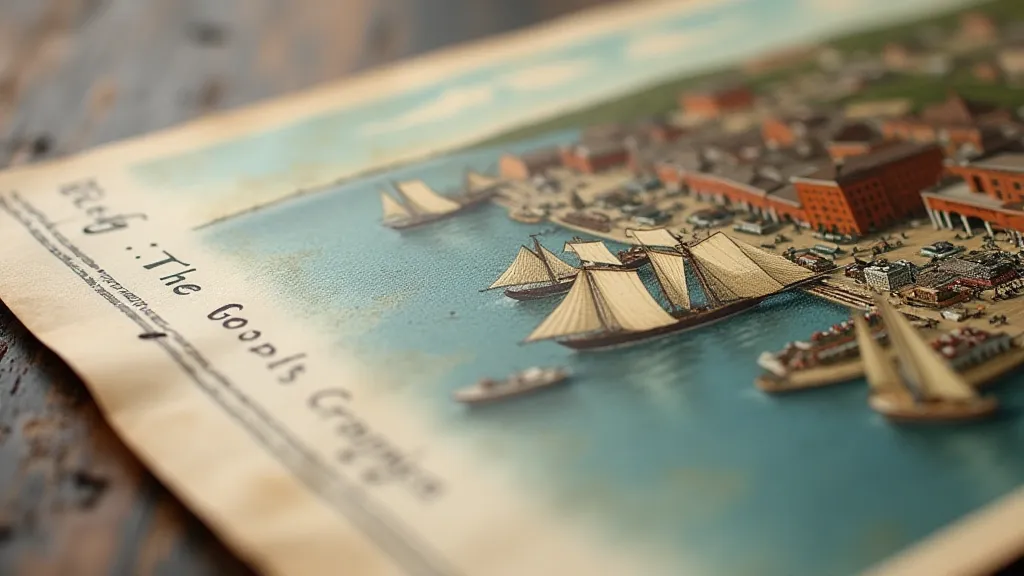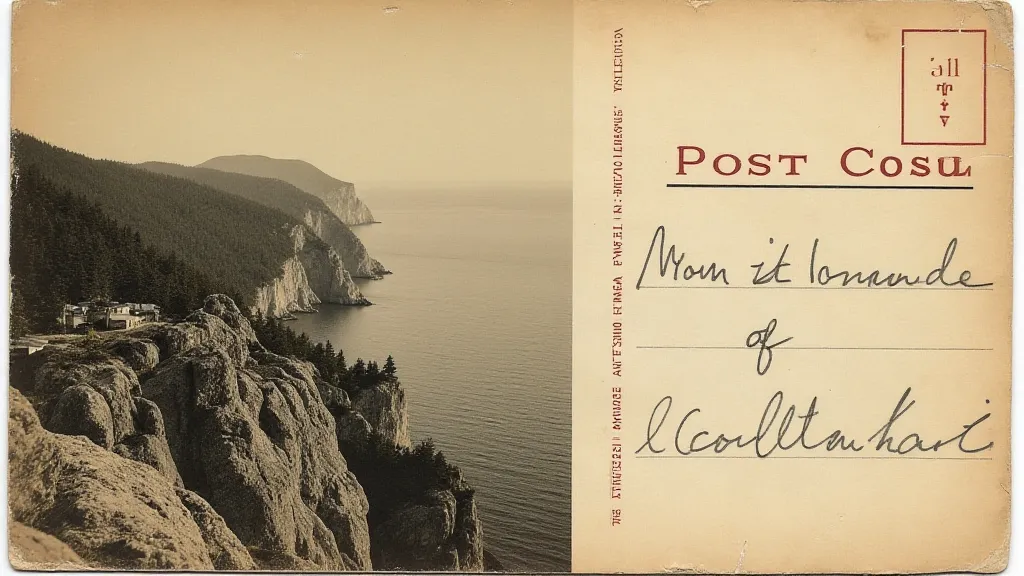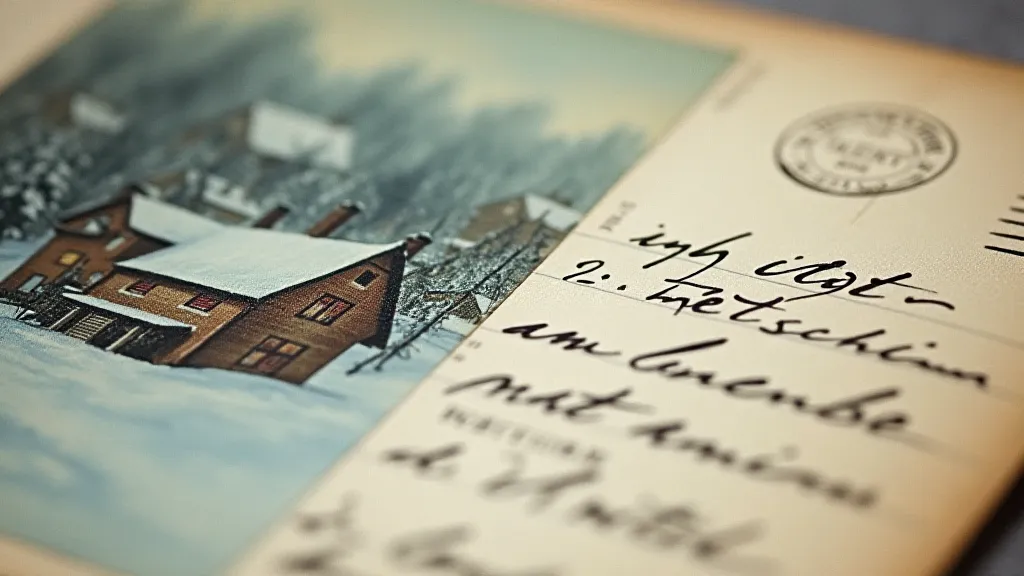The Absent Signature: Unspoken Stories Behind the Maine Postcard Senders
Maine postcards. For those of us drawn to the tactile charm of antique paper and faded inks, they are more than mere images; they are whispered fragments of the past, tangible connections to lives lived long ago. We admire the vibrant depictions of Acadia’s granite peaks, the quaint village scenes of Kennebunkport, the bustling docks of Portland. But what about the postcards that lack a signature? Those silent messengers, sent across miles, carrying greetings and hopes without a name attached? They are the postcards that spark the most profound curiosity, inviting us to weave our own narratives around their unknown senders.
The golden age of postcards, roughly from the 1890s to the 1930s, coincided with a period of immense societal change. Mass transportation, the rise of the middle class, and a newfound desire for leisure travel all fueled a boom in postcard production and exchange. Sending a postcard became a ubiquitous form of communication, a small but meaningful gesture of connection. They were affordable, lightweight, and provided a visual window to places far from home. The sheer volume of postcards sent during this era is astonishing; imagine the countless stories they held, the myriad connections they fostered.
Now, consider the postcards that arrived without a signature. Why the anonymity? The reasons are as varied as the people who sent them. Perhaps the sender was shy, hesitant to reveal their identity. Maybe they were writing to a distant relative with whom a formal relationship persisted, a fleeting moment of connection within a more distant familial tie. It's conceivable they were writing to someone they admired from afar – a brief, anonymous expression of fondness. Or perhaps, simply, the sender forgot, or neglected, to sign their name, caught up in the moment of sharing a cherished view.

The Craftsmanship and the Sentiment
Examining these unsigned postcards, we appreciate not only the image itself but the craftsmanship of the era. Early postcards were almost exclusively lithographs, painstakingly created by skilled artists. The vibrancy of the colors, even now, despite decades of fading, testifies to the quality of the printing process. The detail in the depictions – the individual leaves on a tree, the subtle curve of a roofline – demonstrates the dedication of the artists. These weren’t mass-produced, cookie-cutter images. Each one was a labor of love.
Think about the sender’s role in all of this. They chose the image, carefully selected the recipient, and penned a brief message – often just a few words of greeting or a simple declaration of “wish you were here.” They then affixed a stamp and entrusted their message to the postal system, with the hope that it would reach its destination and bring a moment of joy or connection.
Whispers of Stories: Imagining the Senders
It’s the absence of a signature, however, that truly captivates. It transforms the postcard from a mere object into a puzzle, an invitation to imagine. Who was this person who felt compelled to share a view of Mount Desert Island with someone they knew? Were they a traveler, experiencing the beauty of Maine for the first time? Or were they a local, sharing a familiar scene with a loved one far away? Perhaps they were a soldier stationed in Maine during wartime, sending a glimpse of home to a family back across the ocean.
One unsigned postcard I have depicts a view of Old Orchard Beach, circa 1910. The pier stretches out into the Atlantic, bustling with activity. I often find myself imagining the sender – a young woman, perhaps, newly arrived in Maine for the summer, writing to a sweetheart back home. She’s excited to share the thrill of the seaside, the salty air, the laughter of the crowds. The postcard is a small piece of her joy, sent across the miles. It’s a fleeting moment captured and shared, a testament to the power of human connection, anonymous as it may be.

Restoration and Preservation: Respecting the Past
Preserving these unsigned postcards is a delicate matter. The paper is fragile, the inks are prone to fading, and the edges are often torn or frayed. Careful handling and proper storage are essential. Avoid direct sunlight and extreme temperatures. Archival-quality sleeves and albums can provide a protective barrier. While restoration is sometimes tempting, it's important to resist the urge to over-clean or alter the original condition. The imperfections – the faded ink, the torn edges – are part of the postcard's history, evidence of its journey through time.
Collectors often specialize in particular themes or regions. Some focus on specific towns or landscapes; others collect postcards featuring particular modes of transportation or architectural styles. Even within these specializations, the unsigned postcards hold a unique appeal. They are mysteries to be pondered, fragments of stories waiting to be pieced together.
The Enduring Power of Connection
Ultimately, the unsigned Maine postcards remind us of the enduring power of human connection. They are tangible links to the past, silent witnesses to lives lived and loves shared. They speak to a desire for communication, a need to connect with others, even across vast distances and the passage of time. Even without a signature, their message resonates – a whisper of remembrance, a reminder of the beauty and wonder that exists in the world, and the simple joy of sharing it with someone else.

These anonymous messengers speak to us across the years, inviting us to imagine, to speculate, and to connect with the past in a profoundly personal way. And in doing so, we keep the stories alive, one faded postcard at a time.





